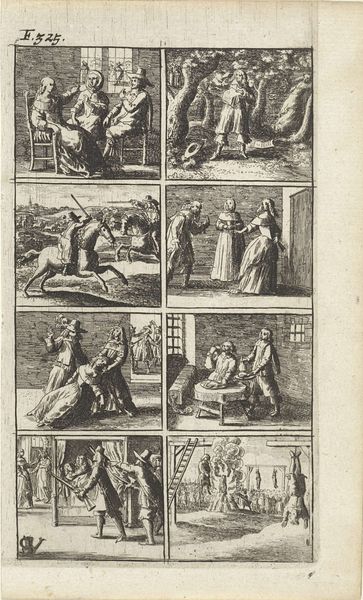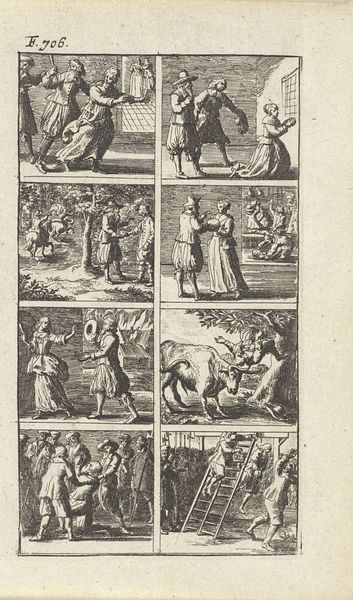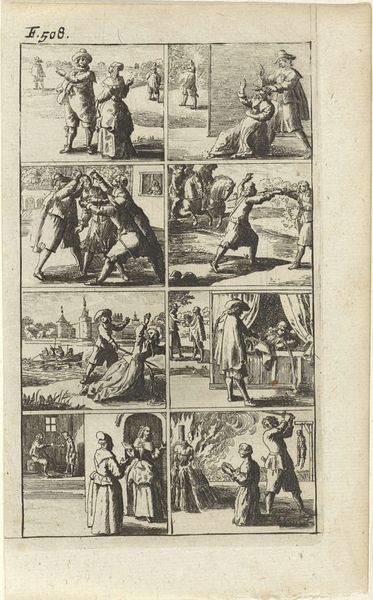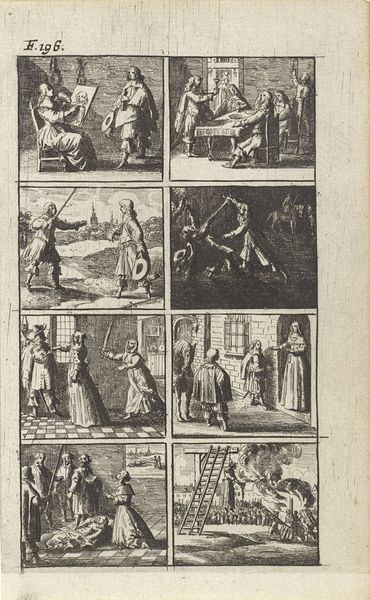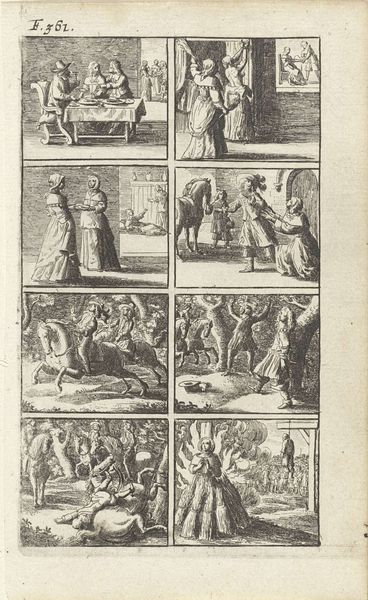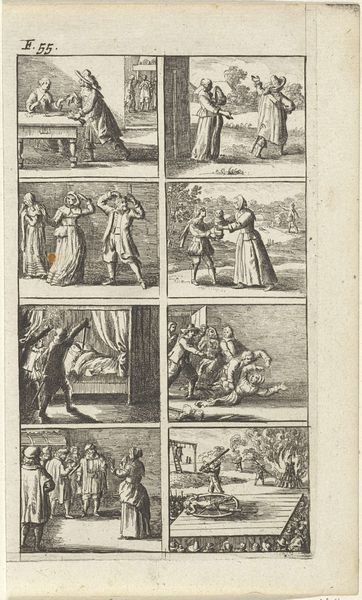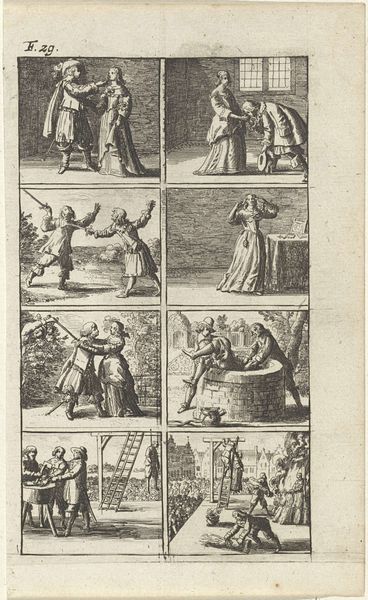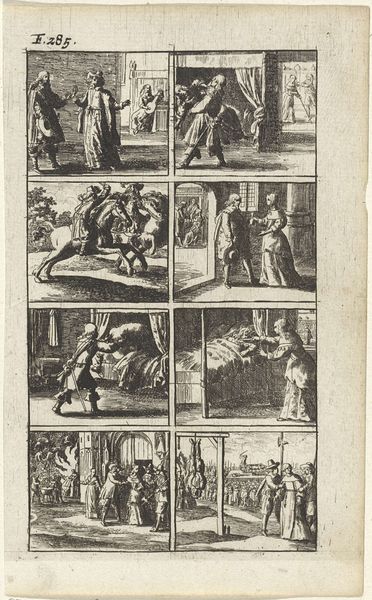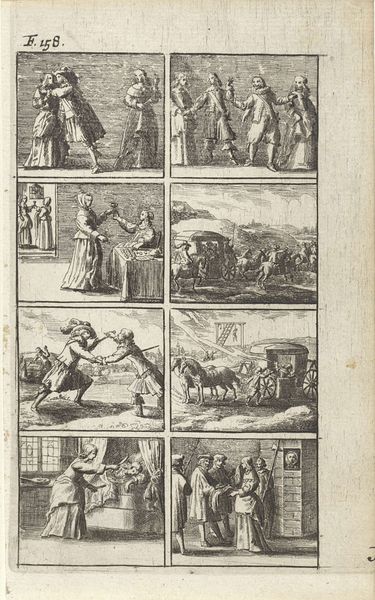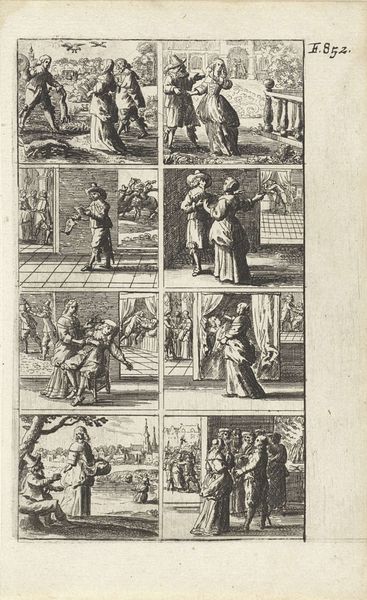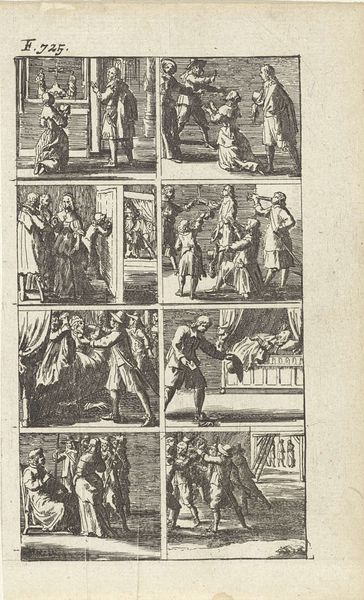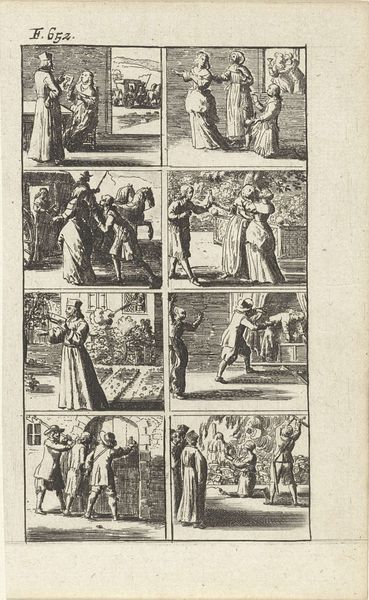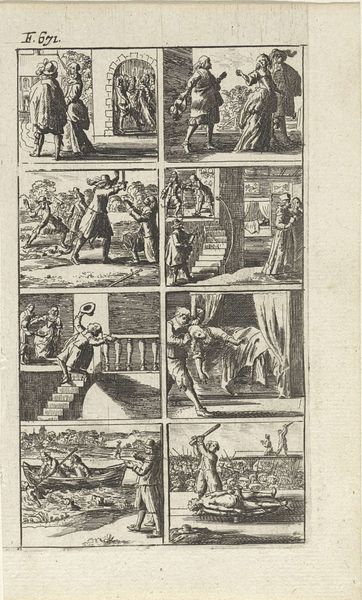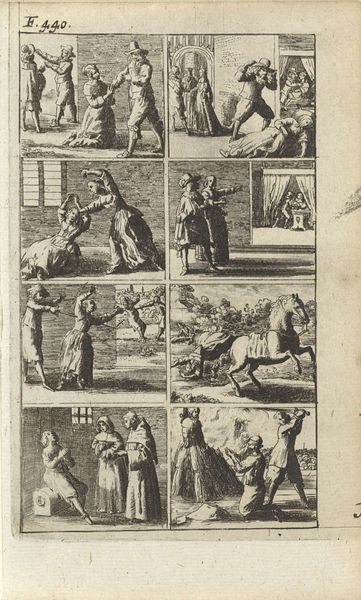
Verhaal met voorstellingen van moord en doodstraf (F. 588.) 1667
0:00
0:00
print, engraving
#
narrative-art
#
baroque
# print
#
history-painting
#
engraving
Dimensions: height 155 mm, width 95 mm
Copyright: Rijks Museum: Open Domain
Editor: This engraving from 1667 by Abraham Dircksz. Santvoort, titled 'Verhaal met voorstellingen van moord en doodstraf,' is rather graphic. It depicts a series of what looks like violent and punitive scenes, arranged in a grid. The last one with the hanging is quite shocking! How do you interpret this work and its role back then? Curator: Well, it’s impossible to separate this image from the socio-political context of the Dutch Golden Age. The engraving served as a potent form of visual communication. Its narrative approach highlights the role of visual media in disseminating societal values, specifically concerning justice and the repercussions of deviance. Consider how public executions functioned not merely as punishment, but as carefully staged events meant to reinforce social order. What impact might images like this have had on public perception of justice and power? Editor: So, it's less about individual artistic expression and more about enforcing a certain public image, a show of power. Curator: Exactly. It emphasizes how art served institutional needs. Note how each scene, while graphic, is meticulously rendered, almost clinical in its depiction of process. It suggests a calculated effort to convey authority. How does the organization of the scenes within the grid format contribute to the overall message? Editor: The grid compartmentalizes the horror, but also implies a system, an inevitable chain of events perhaps? Were such images common then? Curator: Very common, particularly as printed media became more accessible. Broadsides and prints like this were crucial tools for shaping public discourse. Understanding the public role of images like this, especially the politics inherent in its imagery, really gets at what art making was for. Editor: This really makes me think about the purpose and influence of images, even today! It shows me a completely new perspective on what history is supposed to mean. Curator: Indeed, and reminds us how vital it is to study art within its historical and political framework.
Comments
No comments
Be the first to comment and join the conversation on the ultimate creative platform.
